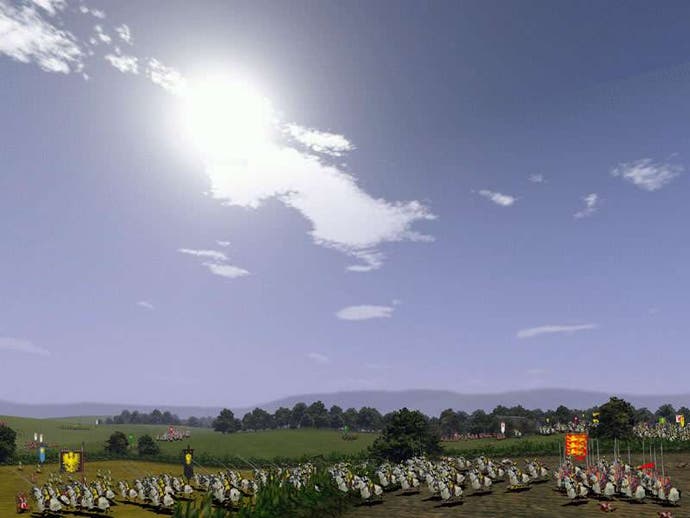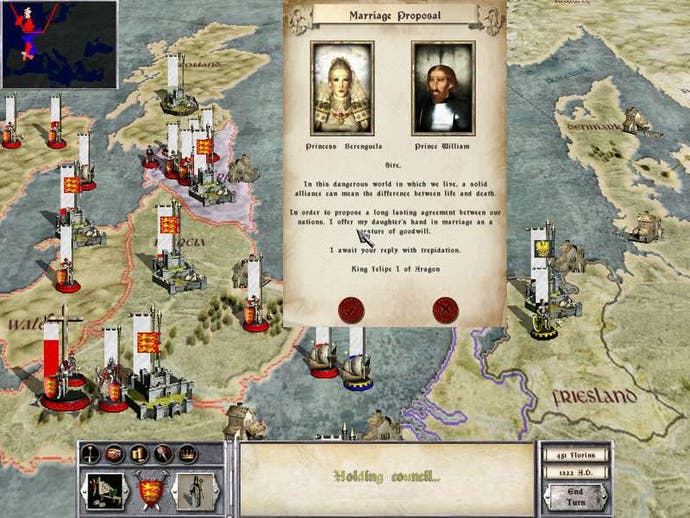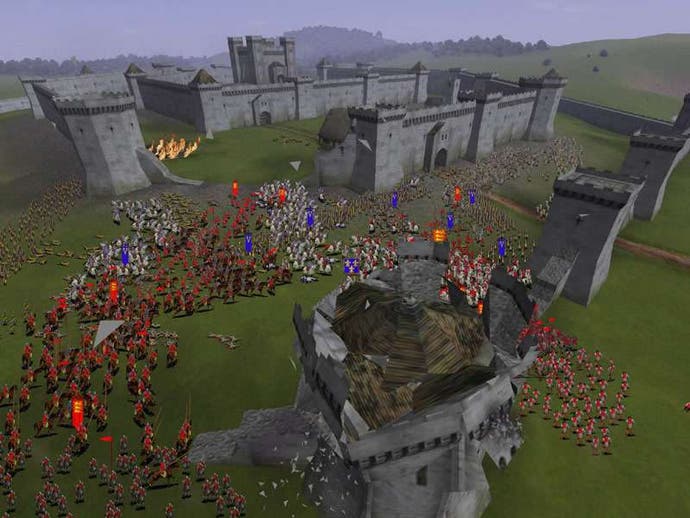Mike Simpson of Creative Assembly
Interview - Creative Assembly tell us all about Medieval: Total War
When it was released a little over two years ago, Shogun was a breath of fresh air for the real-time strategy genre. Not only did it sport a novel setting in the form of feudal Japan, but it also grounded the epic real-time tactical battles in a wider turn-based conflict raging across the whole country, with room for diplomacy and covert action alongside wholesale invasions.
With the long awaited sequel, Medieval: Total War, finally arriving on store shelves at the end of last week, we caught up with Development Director Mike Simpson to find out what Creative Assembly have in store for us this time.

All Change
Shogun's critical and commercial success didn't come as a great surprise to its developers, who "had plenty of time to realize that it was a bit special" while they were working on it. As a result a sequel was always part of the plan, and preparations for it began very early on. "Games take years to make, but you always have to be planning one or two games ahead", Mike explained.
Although the expansion pack for Shogun had continued with the Far Eastern theme, the second full game in the Total War series moves the action to the other side of the world - medieval Europe, to be precise, a far more familiar setting for most western gamers. "The choice of setting was determined by a number of factors. The gameplay needed a setting where a number of factions fight for dominance, and a period where there is a major technological change in warfare to drive the tech tree. The content also had to be really interesting and have appeal to a worldwide audience. Medieval Europe satisfied all these."
It's not just the game's setting that has changed: Creative Assembly have also switched publishers. While Shogun was handled by gaming industry behemoth Electronic Arts, Medieval is being published by rising star Activision. "We always worked really well with EA and the power of their marketing machine is legendary, but we were a small fish in the EA pond", Mike replied when we quizzed him about the move. "Activision impressed us with their desire to make Medieval: Total War a huge success, and we felt that they would give it the attention it deserves."

What's New?
Although at first sight Medieval looks fairly similar to Shogun, a lot of changes have been made, both on the surface and behind the scenes. "We have increased the graphics quality across the board - up to four times the detail level on the men, higher resolution ground textures, bigger battlefields and ten times the variety of units. We have also put a lot of work into collapsing walls and buildings, smoke, fire and general pyrotechnics. The sky was the limit (and we improved that too)."
"The interface is pretty much the same as Shogun. We took into account all the feedback from Shogun and made a few things easier to do. We also present the player with more information as to what's going on, and make it easier to get to. The new features mostly slotted into the existing interface without making it more complex."
"The gameplay is where the biggest changes are. The campaign game is a fuller, much more rounded game. It would stand up as a fine game even without the 3D battles. With them it's very, very impressive. There are more factions to play as with real gameplay differences between them, ten times the variety of units, trade, naval battles and invasions, castle assaults, siege weapons on the battlefield, improved AI, RPG like aspects for generals, hundreds of famous individuals (like Joan of Arc or William Wallace) and loads more."

The Royal Family
The added role-playing elements and historical characters are perhaps one of the most important changes, certainly when it comes to the turn based side of the game. Players can now guide the royal family of their chosen country through several generations of ruler, complete with lines of succession and the possibility of civil wars to worry about. So how does all of this work in the game?
"Kings have sons and they are your heirs. When the king dies the oldest son takes over. That's when it gets a bit complicated, because the new King still has brothers, and they are heirs too, but they only take over if the new King dies before he has sons. When a Prince becomes King, his uncles cease to be heirs and become normal generals but with royal blood. If you then get careless and lose a few Kings quickly and you run out of heirs, any royal blood generals will claim the throne. If there's more than one a civil war breaks out. In fact, old uncles are generally dangerous and are often the ringleaders in civil wars, even without a succession. Complicated ? Well, you did ask."
"This is a good example of how the game takes a complicated historical detail and folds it into the gameplay without making the game complicated. As a player you always know how many heirs you've got and you know that if you run out it's a bad thing. At best you get a civil war, and at worst it's game over. That's all you need to know, but the detail of who is who is there if you're an avid royal watcher."

Collapsing Castles
This being medieval Europe, sieges naturally play a bigger role in the second Total War game, and a lot of attention has gone into making these suitably epic.
"Castle assaults involve siege weapons (starting off with catapults and ending up with huge siege cannon) firing at the castle towers and walls to neutralise the castle defences and create a breech. This all has the appropriate special effects - smoke, fire, gouts of dust as walls and towers collapse. You then attack through the breech and fight your way into the heart of the castle. Castles range from tiny to vast, and can have layers of walls and defences. Players can upgrade base castles to add extra defences - arrow towers and the like - but they don't get to lay them out themselves during a game, it's too time consuming. They can of course use the map editor to create their own customised castles if they want to."
Although the game was only just released a few days ago, fans have been trying out some of these new features for a couple of months now, as Creative Assembly released a demo very early on. "It gives us some direct feedback on the battles, but also gets people interested in the game as a whole, and as we put more and more details out about the full game we get feedback on that too", Mike explained. "The game has changed a huge amount since the demo in the light of that feedback, mostly on the campaign side."
Conclusion
The end result of all that testing and tweaking is already proving popular, and Mike seems happy with the outcome. "I'm a perfectionist, and no game is perfect", he admitted. "The game overall is pretty close to the way I'd hoped it would be, but I could easily spend another couple of years working on it. Fortunately for the gaming public that isn't an option and they get to play it now. It's 95% perfect." That figure might increase slightly, as Creative Assembly are working on a patch to solve any slight problems that slipped through testing, and they're also listening to player feedback to see if any other changes need to be made. "We think it's important not to just abandon a game once it's in a box", Mike told us, "and we're also considering an expansion pack". Beyond that, fans will be happy to hear that work is already afoot on other Total War games, "so you won't have to wait three years for the next one".

